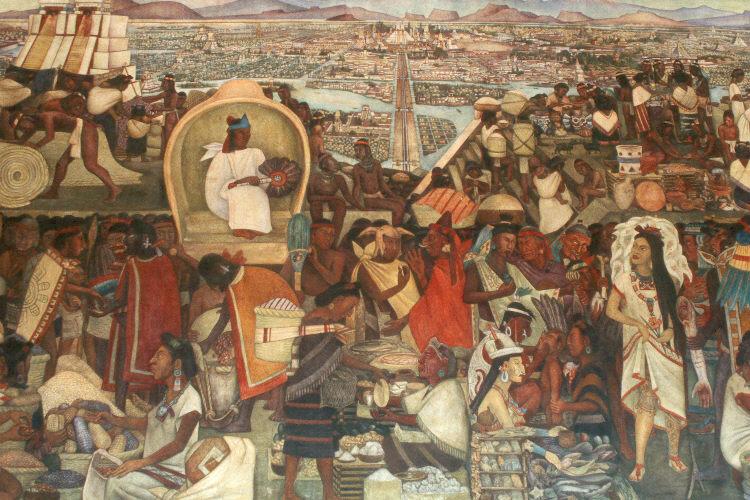
An Aztec passage describing Cortez' men's assault:
- They ran in among the dancers, forcing their way to the place where the drums were played. They attacked the man who was drumming and cut off his arms. Then they cut off his head, and it rolled across the floor.
- They attacked all the celebrants, stabbing them, spearing them, striking them with their swords. They attacked some of them from behind, and these fell instantly to the ground with their entrails hanging out. Others they beheaded: they cut off their heads, or split their heads to pieces.
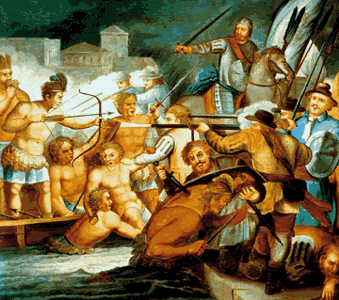
- They struck others in the shoulders, and their arms were torn from their bodies. They wounded some in the thigh and some in the calf. They slashed others in the abdomen, and their entrails all spilled to the ground. Some attempted to run away, but their intestines dragged as they ran; they seemed to tangle their feet in their own entrails. No matter how they tried to save themselves, they could find no escape.
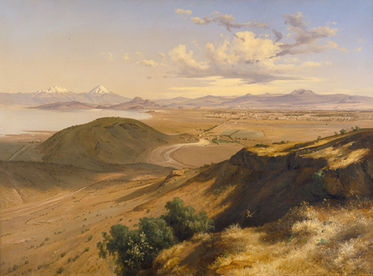 The Valley of Mexico
The Valley of Mexico
Another passage, a masterpiece of the descriptive art of the Aztecs, shows how the Indians pictured the "stags or deer" on which the Spaniards rode. Motolinia, one of the early missionaries, wrote that the Indians "were filled with wonder to behold their horses, and the Spaniards riding on their backs."
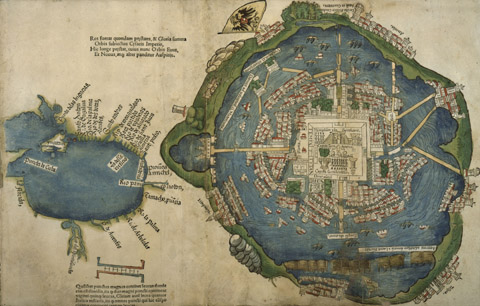
Cortes' map of Tenochtitlan in 1519.
Now they present their own description, so vivid that it recalls another extraordinary picture of the horse, written in Hebrew by the author of the Book of Job.
They report:
- The "stags" came forward, carrying the soldiers on their backs. The soldiers were wearing cotton armor. They bore their leather shields and their iron spears in their hands, but their swords hung down from the necks of the "stags."
- These animals wear little bells, they are adorned with many little bells. When the "stags" gallop, the bells make a loud clamor, ringing and reverberating.
- These " stags, " these "horses," snort and bellow. They sweat a very great deal, the sweat pours from their bodies in streams. The foam from their muzzles drips onto the ground. It spins out in fat drops, like a lather of amole.
- They make a loud noise when they run; they make a great din, as if stones were raining on the earth. Then the ground is pitted and scarred where they set down their hooves. It opens wherever their hooves touch it.
Goal: to understand this epic narrative of the Conquest from the indigenous documents because they contain a number of scenes like these, so vivid that they seem to invite the artist to interpret them with his pen or brush.
Toltecs
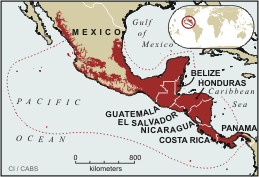 A northern Mexican tribe, who established a military state between the 10th and 12th centuries at Tula, c.80 km (c.50 miles) north of modern Mexico City. They played an important part in the downfall of the city of Teotihuacán and were themselves overrun in the mid-12th century by nomadic Chichimec tribes from the north.
A northern Mexican tribe, who established a military state between the 10th and 12th centuries at Tula, c.80 km (c.50 miles) north of modern Mexico City. They played an important part in the downfall of the city of Teotihuacán and were themselves overrun in the mid-12th century by nomadic Chichimec tribes from the north.
One of their kings was Topiltzín-QUETZALCÓATL, a religious leader who in their legendary history was driven from Tula by a military faction and sailed east into the Gulf of Mexico, vowing to return one day.
